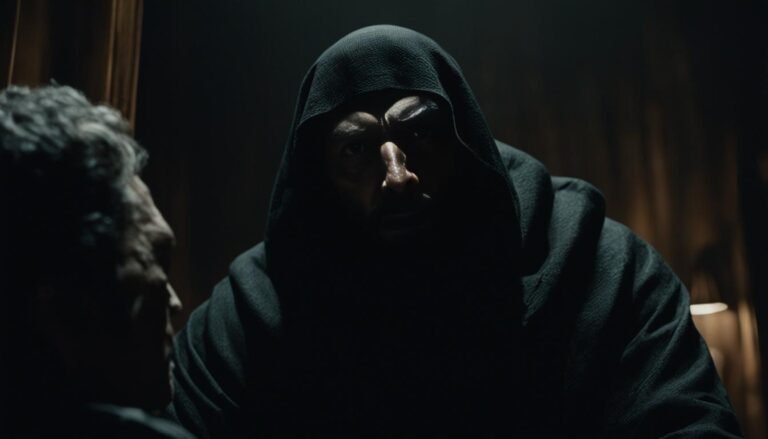Prospect Theory: How People Make Choices Under Uncertainty
Ever wondered why we often make choices that seem irrational when things are uncertain? It might be because of prospect theory. This theory was created by Daniel Kahneman and Amos Tversky in 1979. It shows us how people decide when there’s risk and uncertainty.
This theory goes against old economic ideas about decision-making. It gives us new insights into why we make the choices we do.
Key Takeaways
- Prospect theory suggests that people value gains and losses differently, placing more weight on perceived gains than perceived losses.
- Individuals tend to be risk-averse when facing potential gains, but risk-seeking when facing potential losses.
- The theory highlights the importance of cognitive biases and heuristics in decision-making, such as the certainty effect and the reflection effect.
- Prospect theory has been influential in understanding how the framing of a problem can significantly impact an individual’s choice.
- The theory’s insights have important implications for various fields, including behavioral economics, finance, and public policy.
What Is Prospect Theory?
Prospect theory is a key part of behavioral economics. It helps us understand how people make choices when things are uncertain. Daniel Kahneman and Amos Tversky came up with it in 1979. They said people value gains and losses in different ways.
Key Takeaways
- Prospect theory suggests that investors focus more on potential gains than losses, even if both choices have the same value.
- When given two equal choices, people often pick the one that talks about gains.
- It’s also known as loss aversion theory and is a big deal in behavioral economics.
How Prospect Theory Works
Prospect theory explains how we make choices when things are uncertain. It says our brains give more weight to losses than gains. This is called loss aversion.
Tversky and Kahneman found that losses hit us harder than gains. This leads to choices that don’t follow traditional economic logic.
It also says we often ignore likely events and focus too much on unlikely ones. This is called probability weighting. It can cause us to make choices that aren’t the best.
“Prospect theory was formulated by Daniel Kahneman and Amos Tversky in 1979, focusing on behavioral economics, judgment, and decision-making.”
Prospect theory is a big deal in behavioral economics. It gives us a better look at how we make choices when things are uncertain. It includes things like cognitive biases and emotions that other theories might miss.
Motivation for Prospect Theory
In 1979, psychologists Daniel Kahneman and Amos Tversky started prospect theory. Their work showed how people make choices when things are uncertain. This led to the creation of prospect theory.
The Certainty Effect
Kahneman and Tversky found that people overvalue certain outcomes compared to likely ones. This is the certainty effect. Even if the expected values are the same, people often choose certain outcomes over likely ones.
The Reflection Effect
The researchers also found that when dealing with potential losses, people’s choices mirror their choices over gains. They are risk-averse when dealing with gains, but risk-loving when dealing with losses.
The Isolation Effect
They also discovered the isolation effect. People tend to ignore similar information to make decisions easier when faced with two options that lead to the same outcome. This can change how people make decisions based on how the options are presented.
These findings on the certainty effect, reflection effect, and isolation effect helped create prospect theory. This theory changed traditional expected utility theory and became key in behavioral economics.
“Prospect theory was developed by Amos Tversky and Daniel Kahneman in 1979 to describe how individuals evaluate losses and gains asymmetrically. Individuals are more influenced by the fear of loss than the prospect of an equivalent gain.”
Prospect Theory: The Theory
Prospect theory is a key model for making decisions when things are uncertain. It says people make choices in two steps. The editing phase and the evaluation phase are these steps. People use mental shortcuts and biases to make their decisions.
The Editing and Evaluation Phases
In the editing phase, people pick what info to use later. They look at information and decide what matters most. This step is key because it affects how they make decisions.
The evaluation phase is where people make their final choices. Prospect theory says people are risk-averse when the stakes are high. But they become risk-accepting when the stakes are low. This is because of cognitive biases.
“Prospect theory primarily focuses on decision-making under conditions of risk, particularly choices among financial bets and gambles.”
The way the value function and the weighting function work together in prospect theory explains many behaviors. For example, people often prefer insurance for small losses. They also like to play lotteries even though winning is rare.
Knowing how the editing and evaluation phases work in prospect theory is key. It helps us make better decisions when things are uncertain. It also helps us avoid cognitive biases that can affect our choices.
Characteristics of Prospect Theory
Prospect theory was introduced by Daniel Kahneman and Amos Tversky in 1979. It helps us understand how people make choices when things are uncertain. This theory highlights several key traits that influence our choices.
A key trait is the certainty effect. People often prefer avoiding losses over trying to gain more. They like certainties, even if it means giving up potential gains. This leads them to choose options that reduce loss risks over maximizing gains.
Another trait is the discounting of small probabilities. People often underestimate or ignore outcomes with low chances. They overthink the chances of more likely events. This can make them act riskier when they think a positive outcome is more likely than it is.
Prospect theory also talks about relative positioning. People often compare themselves to others, not just their own gains or losses. This can affect their choices, as they might focus more on beating others than their own success.
Lastly, loss aversion is a big part of prospect theory. People feel the pain of a loss more than the joy of a gain. This difference in how we see gains and losses affects our decisions when things are uncertain.
These traits of prospect theory give us a better look at how we make choices when facing risk and uncertainty. They challenge the old ideas of rational decision-making.
“Prospect theory offers greater descriptive validity than utility theory, although it abandons economists’ normative aspirations.”
Overcoming Biases in Decision Making
Prospect theory helps us beat cognitive biases and make smarter choices. It shows how we decide when things are uncertain. It talks about the certainty effect, reflection effect, and isolation effect.
Being aware of biases is a good start. For instance, an investor might focus more on unlikely events if they know they tend to favor likely ones. Framing effects can be lessened by changing how we look at outcomes. This helps us avoid being too scared of losses.
Studies say we often use quick mental shortcuts to judge chances. This can lead to biases like the representativeness heuristic. People judge an event’s likelihood by how it fits a certain class, not by its actual probability.
Knowing about cognitive biases helps us fight them. We can look for different views, question our beliefs, and think about all the facts. Not just relying on quick rules or gut feelings.
“Overcoming biases in decision-making is not about eliminating them entirely, but rather about being aware of them and developing strategies to mitigate their impact.”
The secret to better choices under uncertainty is knowing our thinking limits. By using prospect theory, we can make more logical and effective choices.
Prospect Theory: How People Make Choices Under Uncertainty
Prospect theory helps us understand how people decide when things are uncertain. Daniel Kahneman and Amos Tversky, psychologists, came up with this theory. It goes against the old idea that people always make rational choices.
People usually don’t like taking risks when they might gain something, but they do when they might lose something. This is called the reflection effect. The theory says losing something hurts more than gaining something of the same size. This makes people act differently when facing losses versus gains.
Prospect theory also shows how framing effects and cognitive biases affect our choices. How something is presented can change what people prefer. This often leads to choices that aren’t the best.
“Prospect theory demonstrates that people’s choices are guided by the potential value of losses and gains rather than the final outcome, and their decisions are heavily influenced by the way options are framed.”
For example, people often focus too much on unlikely events, which is why insurance and gambling can be so tempting. The certainty effect also makes people value certain outcomes more than likely ones.
Learning about prospect theory helps us see how people make choices when things are uncertain. It also shows us how to fight against biases that can lead to bad decisions.
Conclusion
Prospect theory, created by Daniel Kahneman and Amos Tversky, sheds light on how we make choices when things are uncertain. This theory in behavioral economics goes against the old expected utility theory. It shows how our minds use biases and shortcuts, like fearing losses more than gains and the certainty effect.
Knowing about these biases helps us understand how people see and deal with risks, gains, and losses. This knowledge is useful in many areas, like personal finance and public policy. It could help make better decisions and improve outcomes. Prospect theory is still being studied and applied in real life.
At the end, prospect theory tells us that making decisions is more than just rational thinking. It’s a mix of personal factors, reference points, and feelings. This insight can guide us in dealing with life’s uncertainties. It encourages us to make more thoughtful and balanced choices.
Source Links
- Prospect Theory: What It Is and How It Works, with Examples
- Prospect Theory – an overview
- Prospect theory
- EconPort – Handbook – Decision-Making Under Uncertainty
- Prospect Theory – The Decision Lab
- Prospect Theory and Loss Aversion: How Users Make Decisions
- Prospect Theory in Psychology: Loss Aversion Bias
- Prospect Theory: How Users Make Decisions – Invesp
- Prospect theory | Psychology, Decision Making & Risk Analysis
- How does decision-making change during challenging times?
- Prospect Theory
- Prospect Theory – an overview
- Prospect Theory: An Analysis of Decision under Risk
- Understanding clinical and non-clinical decisions under uncertainty: a scenario-based survey
- Prospect Theory – You Know You’re Using It?







